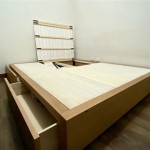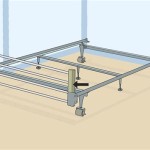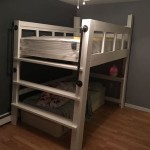When To Transition From Crib Bed: Essential Considerations
As a loving parent, you want the best for your child, including a safe and comfortable sleep environment. Transitioning your little one from a crib to a toddler bed is an important step towards their growing independence. However, it's crucial to consider several key aspects before making the switch to ensure a smooth and successful transition.
1. Developmental Readiness
The first and most important factor to consider is your child's developmental readiness. Most experts recommend transitioning between the ages of 18 to 24 months, when toddlers typically develop the physical and cognitive abilities needed to navigate a larger bed safely. These abilities include:
- Sitting up unsupported
- Climbing out of the crib
- Understanding simple instructions
2. Safety Concerns
Once you determine that your child is developmentally ready, safety should be your top priority. Toddler beds require a different level of safety measures than cribs. Ensure your chosen bed meets the following safety standards:
- Sturdy construction and secure joints
- Low height to prevent falls
- Side rails or guardrails to keep toddlers from rolling out
3. Gradual Transition
To minimize disruption to your child's sleep routine, it's best to transition gradually. Start by placing a mattress or sleeping bag on the floor next to the crib. This allows your toddler to become accustomed to sleeping outside of the crib without the fear of falling. As they adjust, gradually move the mattress closer to the toddler bed and eventually place it on the bed.
4. Create a Safe and Inviting Sleep Environment
To encourage your toddler to embrace their new bed, create a cozy and inviting sleep environment. Use soft bedding, familiar toys, and a dim nightlight to make the transition less daunting. Consider decorating the room with their favorite colors or themes to foster a sense of ownership.
5. Establish Bedtime Routines
Regular bedtime routines are essential for successful sleep transitions. Stick to consistent bedtimes and wake-up times, even on weekends. Establish a calming bedtime routine involving activities such as a warm bath, storytime, or gentle massage. These routines help your toddler wind down and prepare for sleep.
6. Be Patient and Supportive
Transitioning from a crib to a toddler bed may not be seamless. Be patient with your little one as they adjust to the new sleeping arrangement. Offer plenty of reassurance, comfort, and positive reinforcement. If they resist initially, calmly explain the reasons for the transition and remind them of the exciting aspects of their new bed.
7. Regressions and Setbacks
Regression and setbacks are common during sleep transitions. If your toddler experiences any difficulty or resistance, don't be discouraged. It's important to remain positive and consistent with your routines. Sometimes, a temporary return to the crib may be necessary to prevent sleep disturbances until your toddler is more comfortable with the new bed.
Remember, every child is unique, so the transition timeline and strategies may vary. By carefully considering these essential aspects, observing your child's cues, and creating a supportive and safe environment, you can help your little one transition from crib to toddler bed smoothly and successfully.

When To Transition From A Crib Toddler Bed

How To Move Your Child From Crib Toddler Bed Safely

How To Make The Toddler Bed Transition A Success Simply September

Transitioning Your Toddler From Crib To Bed 2024 Lucie S List

Transitioning Toddler From Crib To Bed Everything You Need Know

Transitioning Toddler From Crib To Bed Everything You Need Know

When Should Your Baby Make The Transition From Crib To Toddler Bed Parachute Blog

How To Transition Your Toddler A Floor Bed Outsidethetoybox

10 Best Tips For Transitioning From Crib To Bed Busy Toddler

8 Tips For Transitioning To A Toddler Bed We Love Sleep
Related Posts







